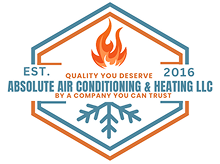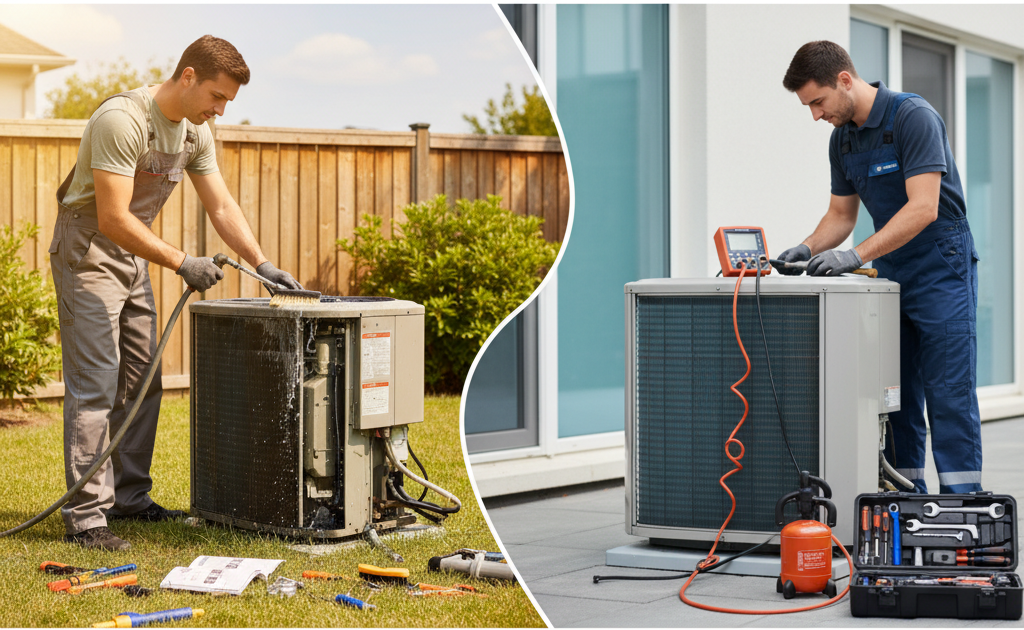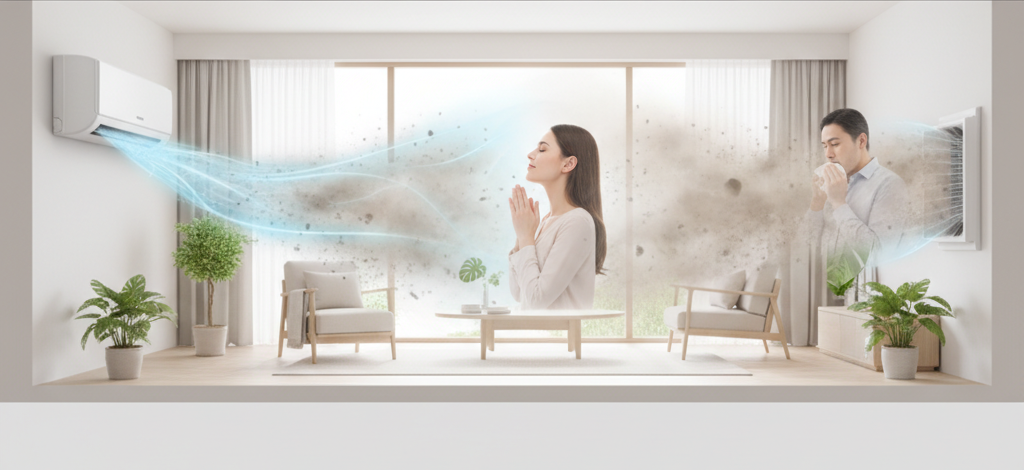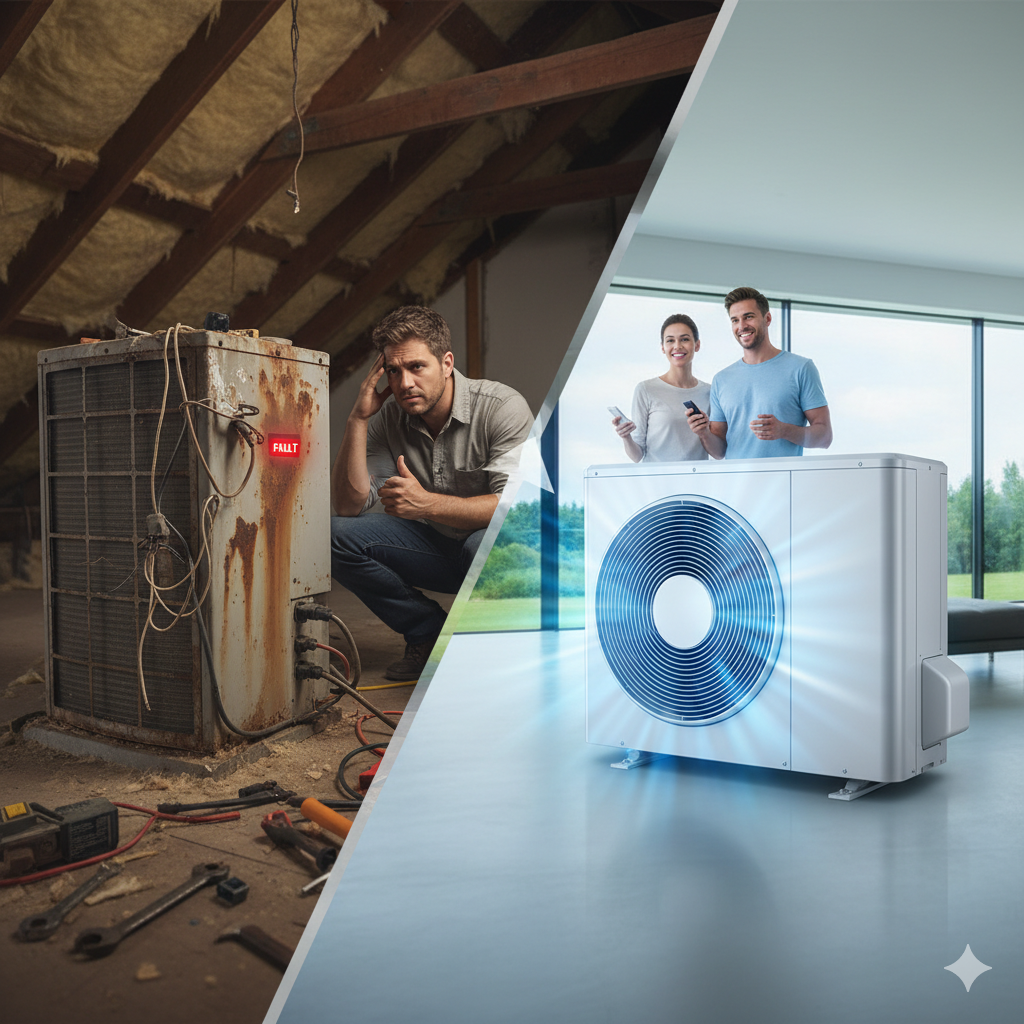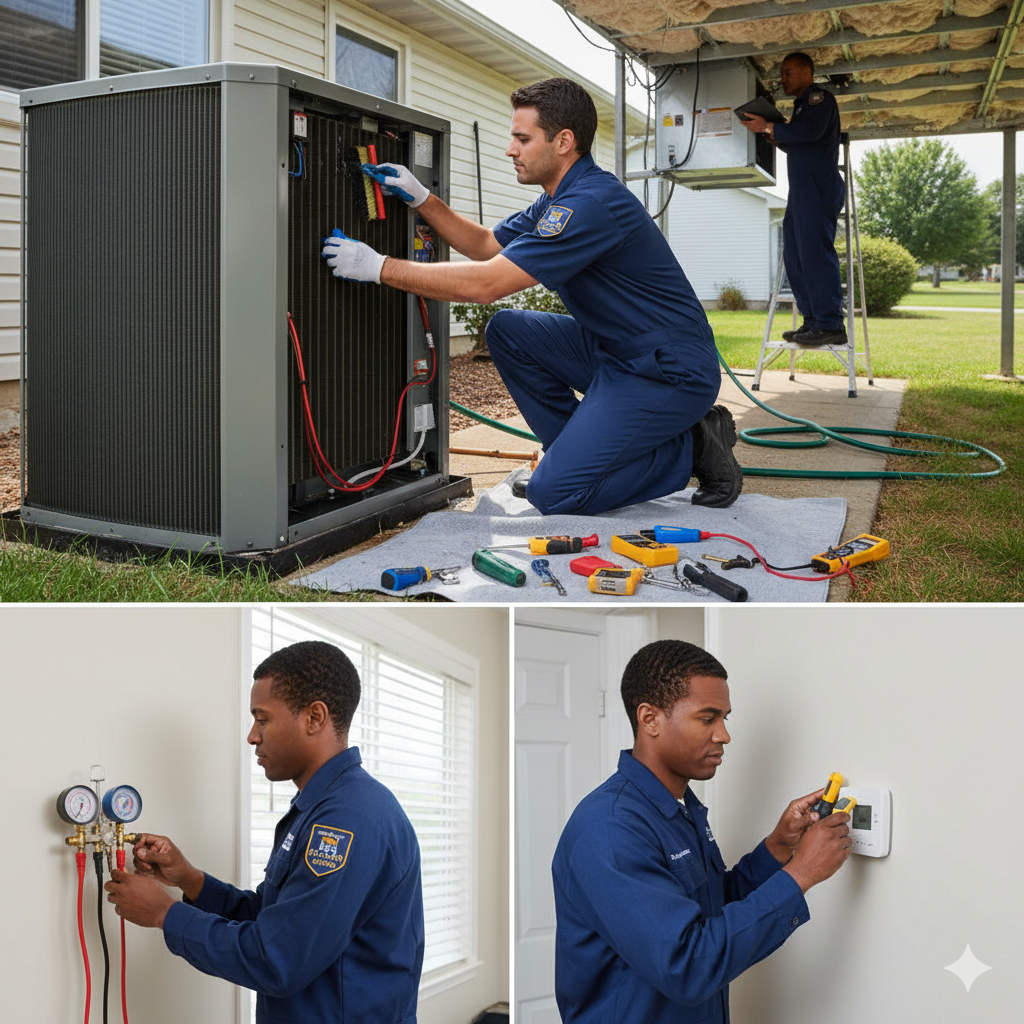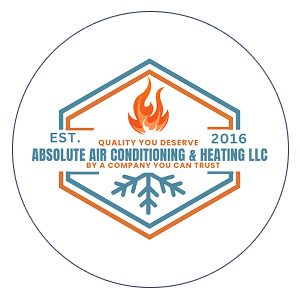Understanding whether to tackle DIY vs professional AC maintenance can save money, improve energy efficiency, and protect your system warranty. In Las Vegas’s harsh desert climate, routine upkeep keeps cooling systems running smoothly under extreme heat. This guide explores cost comparisons for air conditioning service in Las Vegas, outlines safe homeowner tasks, and highlights when AC maintenance service in Las Vegas justifies professional expertise.
You will discover:
- Key differences between basic homeowner upkeep and expert HVAC service
- Benefits professionals deliver for efficiency, lifespan, air quality, compliance
- Risks of DIY repairs, from electrical shocks to voided warranties
- Step-by-step safe DIY checklist and required tools
- Warning signs and complex issues that demand a licensed technician
- Local cost breakdown and long-term savings analysis
- How emerging AI, smart HVAC systems, and new regulations shape professional care
By weighing convenience and cost savings against safety, warranty protection, and technical precision, you’ll know exactly when to roll up your sleeves—and when to call the pros for reliable, compliant cooling performance.
What Are the Key Differences Between DIY and Professional AC Maintenance?
DIY AC maintenance refers to routine tasks homeowners can perform without specialized training or EPA certification. Professional AC maintenance involves licensed HVAC technicians who hold tools, diagnostic equipment, and refrigerant-handling certification to service complex components.
Homeowner efforts typically include basic cleaning and filter changes, saving labor costs but risking incomplete inspections and overlooked issues. A certified technician delivers comprehensive inspections, leak detection, system calibration, and refrigerant management under EPA guidelines. Understanding these roles sets the stage for exploring which tasks fit your skill level and when professional intervention delivers measurable performance gains.
For readers seeking a deeper understanding of system tune-ups, What Happens During a Professional AC Tune-Up? offers a complete breakdown of each step, from coil cleaning to refrigerant balancing.
What Basic AC Maintenance Tasks Can Homeowners Safely Perform?
Homeowners can change air filters, wipe down accessible coils, clear debris around outdoor units, and verify thermostat settings without significant risk. These tasks improve airflow and reduce strain on system components. Performing them regularly supports efficient operation and prepares the system for professional tune-ups.
What Services Do Professional HVAC Technicians Provide?
Licensed technicians perform condenser and evaporator coil deep cleaning, refrigerant pressure checks, electrical component testing, motor lubrication, duct inspections, and full system diagnostics. They also identify hidden leaks, calibrate control circuits, and verify safety switches. This comprehensive approach ensures optimal cooling performance and system integrity.
Those comparing options between DIY care and expert inspection can refer to The Ultimate Guide to Air Conditioning Service in Las Vegas, which outlines every stage of professional service and its measurable performance benefits.
How Do DIY and Professional Maintenance Impact AC System Warranty?
Performing only manufacturer-approved, non-invasive tasks maintains warranty coverage on most residential air conditioners. Tampering with sealed refrigerant circuits, electrical wiring, or internal components without certification risks voiding warranty promises. Professional service under EPA-certified technicians safeguards warranty entitlements.
What Are the Benefits of Professional AC Maintenance?
Professional AC maintenance delivers energy savings, extended equipment life, improved indoor air quality, and ensures compliance with regulatory requirements. A licensed technician’s thorough inspection and calibrated service optimize every component, protecting against sudden failure and maintaining peak performance under Las Vegas’s intense heat.
Many homeowners often ask, How Often Should You Service Your Air Conditioner? — because consistent scheduling directly influences efficiency, longevity, and comfort outcomes throughout the cooling season.
How Does Professional Maintenance Improve Energy Efficiency and Save Costs?
Professional tune-ups improve energy efficiency by up to 15 percent through coil cleaning, refrigerant level adjustment, and precise airflow calibration. Technicians measure SEER performance metrics and address inefficiencies in compressor operation, ensuring the system uses electricity effectively. Reduced energy consumption leads to lower utility bills in high-use months.
In What Ways Does Professional Service Extend AC Unit Lifespan?
By identifying worn components, tightening electrical connections, and preventing refrigerant leaks, expert AC maintenance slows wear and tear on critical parts like the compressor and fan motor. Regular lubrication of moving parts reduces friction, while precision calibration prevents undue system stress. These interventions can extend unit life by 2–5 years compared to neglect or partial DIY upkeep.
For a deeper dive into system care insights, explore How Air Conditioning Affects Indoor Air Quality, which examines how maintenance practices contribute to healthier, more efficient indoor environments.
How Does Professional Maintenance Enhance Indoor Air Quality?
Technicians replace filters with high-MERV ratings, sanitize drip pans, and clean evaporator coils, reducing dust, pollen, mold spores, and microbial buildup. Calibrated humidity control and duct sealing prevent airborne contaminants from circulating indoors. Cleaner air supports respiratory health and combats allergy triggers in occupied spaces.
Why Is Warranty Protection and Regulatory Compliance Important?
Handling refrigerants like R-410A or R-22 requires EPA certification to meet environmental regulations and avoid illegal releases. Certified professionals document service under manufacturer specifications, preserving warranty coverage and complying with refrigerant phase-out mandates. Legitimate documentation ensures any future repairs or replacements remain covered under warranty promises.
When maintenance alone can’t restore full efficiency, evaluating AC Replacement vs Repair: When to Upgrade helps determine whether a new system delivers greater comfort and savings in the long term.
What Are the Risks and Dangers of DIY AC Repair?
DIY AC repair risks include electrical shock, refrigerant exposure, voided warranties, and costly system damage. Without proper training and tools, homeowners may inadvertently damage sensitive components, leading to inefficiencies or total system failure. Recognizing these hazards underscores when professional intervention is essential.
What Are the Potential Costs of Causing Further System Damage?
Minor mistakes—such as over-tightening fittings or misrouting wiring—can lead to compressor burnout, motor failure, or refrigerant leaks. Repair costs for these issues can range from $300 to $1,500, significantly exceeding the savings from skipped professional tune-ups. Unintended damage also shortens the overall service life of your cooling system.
Budget-conscious homeowners looking for a transparent breakdown can consult How Much Does Air Conditioning Service Cost? for a detailed look at pricing factors, seasonal offers, and service inclusions across Las Vegas.
How Does Las Vegas Climate Impact AC Maintenance Needs and Costs?
Las Vegas’s extreme summer temperatures accelerate wear on compressors and cause higher dust accumulation in outdoor coils. Frequent dust storms intensify filter clogging, and intense heat demands rigorous refrigerant management. These local factors justify more frequent professional inspections, typically bi-annual instead of annual, to sustain peak performance and minimize emergency repairs.
Properly balancing DIY vs. professional AC maintenance ensures safe, efficient, and cost-effective cooling operations. Homeowners who plan their service routines with professional guidance from Absolute Air Conditioning benefit from longer-lasting systems, lower energy costs, and improved indoor comfort year-round.
